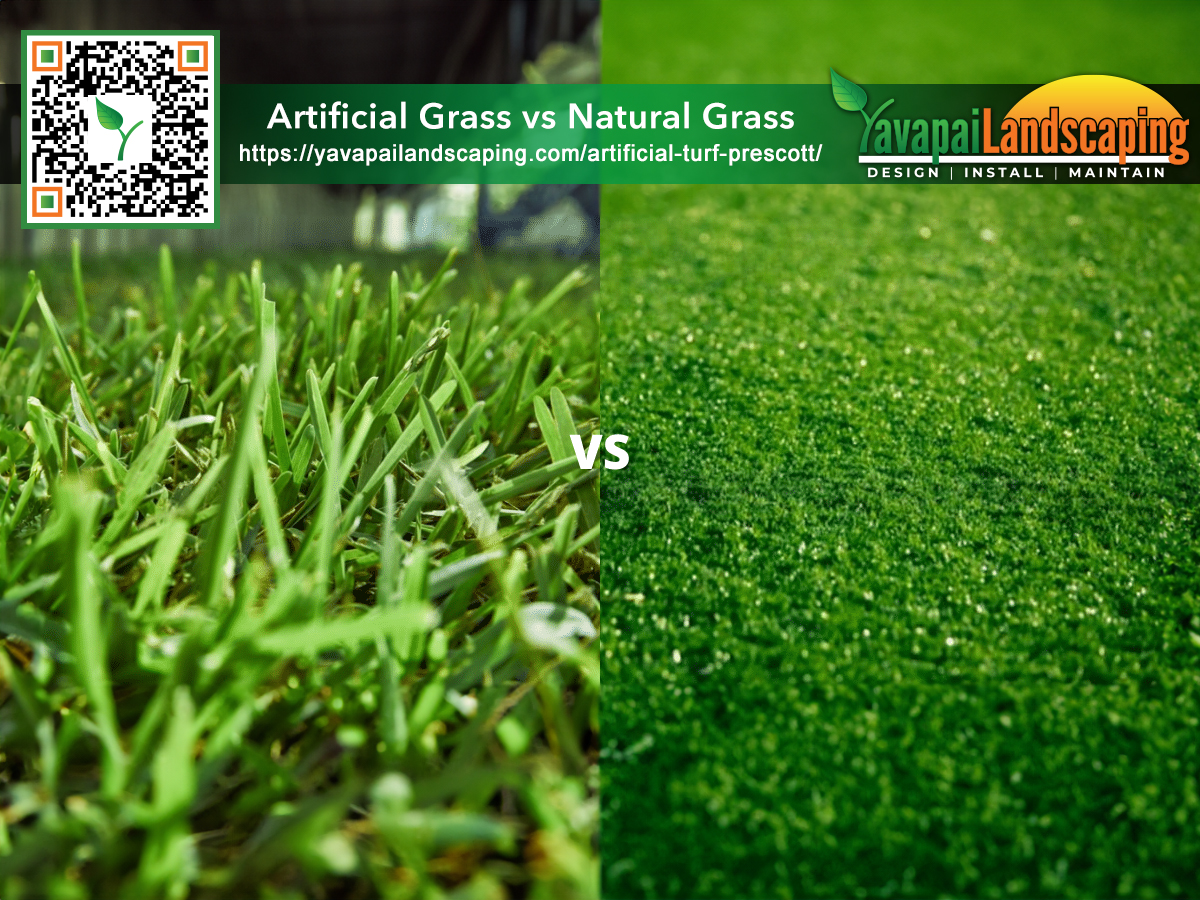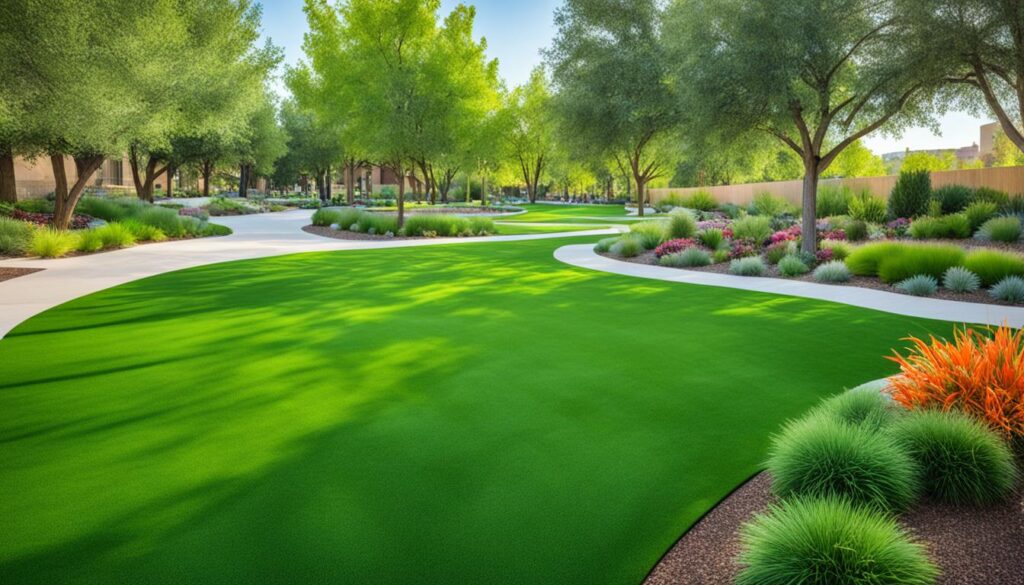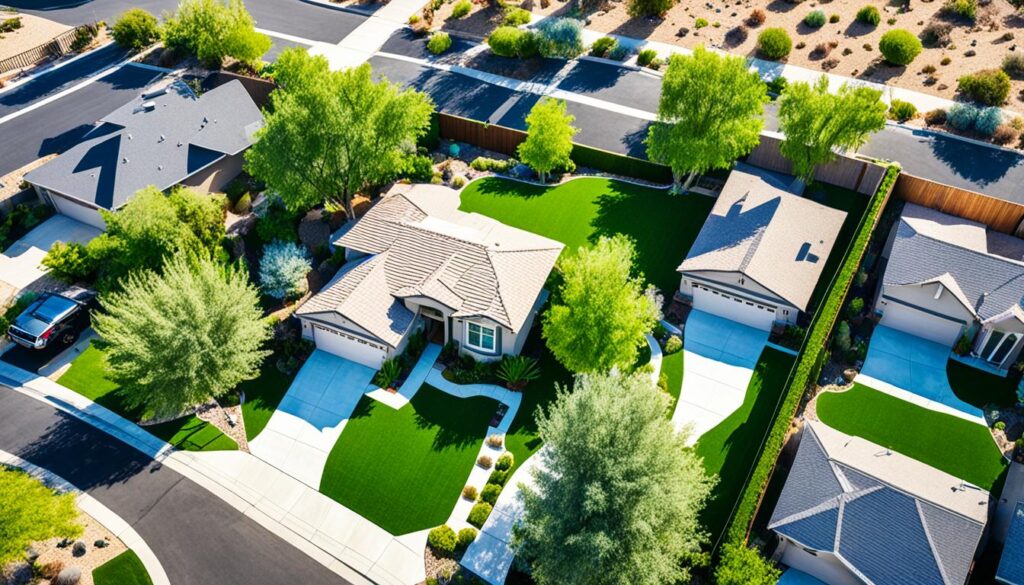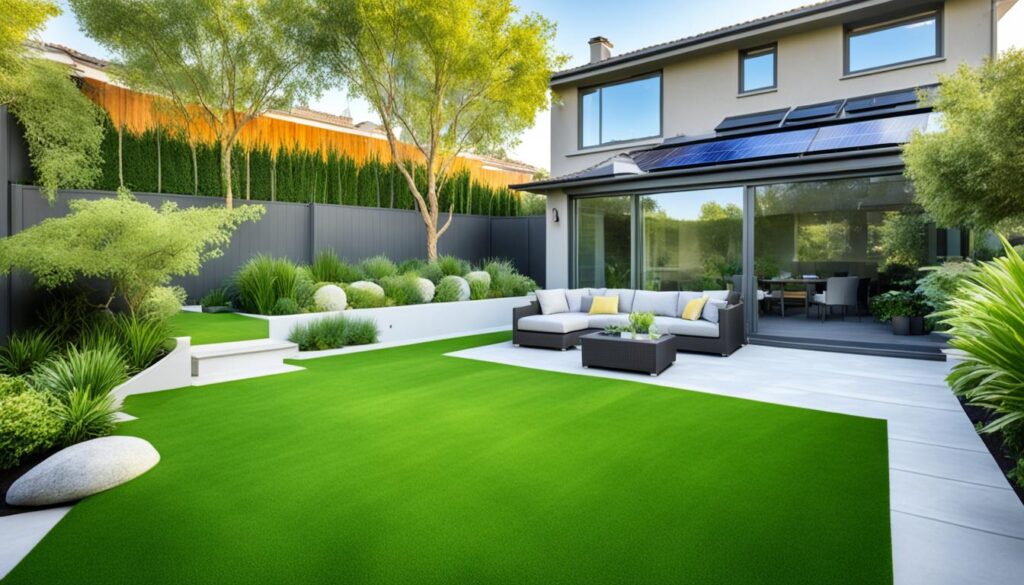
Today, choosing between synthetic and natural lawns is a hot topic. Many are turning to artificial grass, seeing its significant environmental pluses. It saves water, limits the need for chemicals, and changes the game in landscaping.
Going deep into the effects of our choices, artificial grass shines. This choice helps fight water scarcity and cuts down on chemical pollution. It’s a winner for those who care about the planet.
Synthetic turf is a standout in green landscaping. It saves resources and avoids harming our ecosystems. This approach offers a new way to care for our lawns, one that’s friendlier to the planet.
Key Takeaways
- Artificial grass significantly reduces water usage
- Synthetic turf eliminates the need for harmful lawn chemicals
- Eco-friendly landscaping with artificial grass requires less maintenance
- Sustainable lawn alternatives help conserve natural resources
- Artificial grass offers long-term environmental benefits
Understanding Artificial Grass and Its Composition

Artificial grass is now more advanced than ever. It’s made to look like real grass but is super strong and performs well. Let’s see what makes up this cool landscaping choice.
Materials Used in Manufacturing Artificial Turf
It’s mainly made of synthetic fibers and recycled stuff. The grass is usually polyethylene or polypropylene. These are picked for their tough quality and natural look. They’re also treated to handle sunlight without losing color.
Lifespan and Durability of Synthetic Grass
Synthetic grass lasts a long time, up to 15-20 years, with proper care. This is longer than real grass can ever survive. Its wear resistance comes from a high-tech setup that supports the grass well.
Technological Advancements in Artificial Grass Production
Over the years, making artificial turf has gotten a lot better. It’s now more natural to the touch and to the eye thanks to things like:
- Blades that look more real
- Drainage that handles water well
- Greener choices for infill
- Surfaces that stay cleaner because of special treatments
All these advances have turned synthetic grass into a top choice for many. It’s popular in both homes and workplaces.
Water Conservation: A Key Advantage of Synthetic Lawns
Artificial grass is a hero when it comes to saving water. Real lawns can use a lot of water, especially in hot places. With fake grass, you don’t need that much water. It’s the best for places that need to save water.

Fake grass saves a lot of water. A 1,000-square-foot real lawn uses 56,000 gallons a year, but with artificial turf, you use no water. This means less money is spent on water, which helps sustain our water use.
People in dry areas love artificial grass. It looks great and doesn’t use too much water. Some places even give you money back for using it as part of their water-saving plan.
- No watering needed
- Saves thousands of gallons annually
- Perfect for drought-prone regions
- Qualifies for water conservation rebates
If you pick fake grass, you’re helping save water. This supports a move to landscaping that’s kind to our planet. It’s a wise and green choice for any home. This article holds wisdom – give it a read.
Reduction in Chemical Usage and Runoff
Artificial grass is a key way to have pesticide-free lawns. It eliminates the need for harmful chemicals, which helps our earth stay healthy.
No More Pesticides or Fertilizers
With artificial grass, you stop needing pesticides and fertilizers. Unlike natural lawns, it doesn’t need these to look good. This change is great for our planet.
Protecting Water Systems
Artificial grass helps keep chemicals from getting into the water. Rain can carry these harmful substances from regular lawns to waterways. Synthetic grass prevents this, helping save our streams and oceans.
Long-Term Environmental Gains
Not using chemicals in lawns has many lasting benefits. It leads to:
- Healthier soil
- Increased biodiversity
- Improved water quality
- Safer environments for children and pets
Choosing artificial grass supports a better future. It fits with larger efforts to protect our planet.
Artificial Grass Environmental Benefits: A Comprehensive Overview
Artificial grass brings more than just saving water and chemicals. It helps cut down on our carbon footprint. Plus, it saves energy, too.

One big plus about artificial grass is that there is no more mowing. Less gas from lawn machines pollutes our air, which makes a real difference, especially in cities with lots of pollution.
Synthetic grass fights the urban heat island effect. Instead of holding heat like real grass does, it reflects the sun. This reflection can cool down hot city spots.
- No need for water-intensive irrigation systems
- Reduced use of chemical fertilizers and pesticides
- Lower maintenance requirements, saving time and resources
Artificial grass lasts a long time, up to 15-20 years. It cuts down on new installations and the resources that go with them.
Even though installing requires energy, the long-term savings are worth it. Choosing artificial grass means doing good for the planet and getting a beautiful, low-maintenance lawn.
Carbon Footprint Comparison: Artificial vs. Natural Grass
When comparing artificial and natural grass, we must consider their whole life. This means we check everything from making them to throwing them away. We do this to determine their lasting effects on the planet.
Because of how it’s produced, artificial grass initially releases more carbon into the air. Yet, it needs less work to maintain, cutting the ongoing carbon pollution. On the other hand, natural grass starts with a lower carbon footprint but needs much care, which causes more pollution over time.
The machines we use to keep up our lawns matter a lot. Natural grass often needs mowing with gas-powered machines, which put harmful gases into the air. Artificial grass doesn’t need mowing, so we use fewer machines, which reduces pollution and saves fuel.
- Natural grass: Ongoing mowing, fertilizing, and watering
- Artificial turf: One-time installation, minimal maintenance
Both types of grass affect the environment through transportation. Natural grass needs a lot of things brought to it, like fertilizers, and sometimes it needs to be replanted. Artificial grass needs materials brought only once for its setup. After that, there’s no more transportation pollution from using it.
Although making artificial grass at first seems worse for the environment, it often turns out to be better over time. This is because it needs less care and lasts longer. But how much better depends on the place and how you take care of your lawn.
Making the Switch: Considerations for Environmentally Conscious Homeowners
More and more homeowners are turning to eco-friendly yard designs. This trend helps the environment and fits with a broader green approach to home improvements. Still, it’s smart to think carefully before installing artificial grass.
Looking into your area’s rules is a must. Some places might not allow synthetic lawns. It’s key to pick materials that are both high-quality and safe. Choosing a skilled installer is important, too. They’ll make sure your lawn lasts long and helps the planet effectively.
Thinking beyond just artificial grass is a good idea. Pairing it with native plants, rain gardens, or special hardscaping can be very beneficial. Together, these choices save water, help local wildlife, and lessen your home’s environmental impact.
A thoughtful approach to your yard’s design can lead to a beautiful, easy-to-care-for space. One that’s good for you and the planet. This kind of planning shows you’re serious about caring for the earth.
Yavapai Landscaping Prescott offers free quotes for landscaping and tree services in Prescott and its surrounding areas. This includes tree removal, trimming, stump grinding, land clearing, storm cleaning, and emergency tree service.
